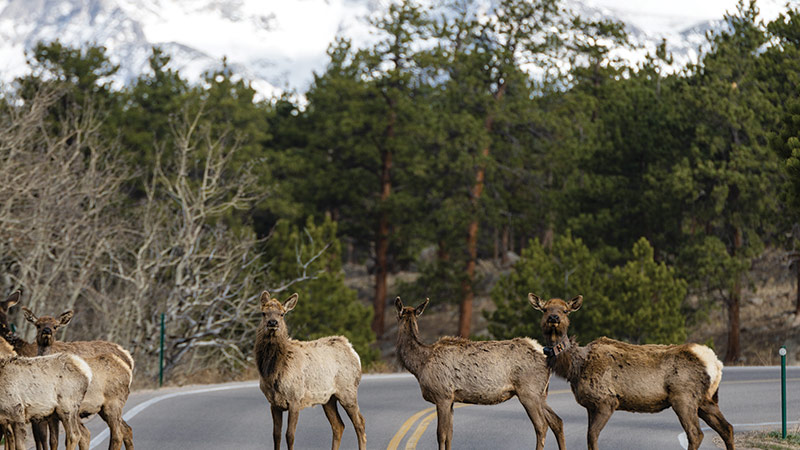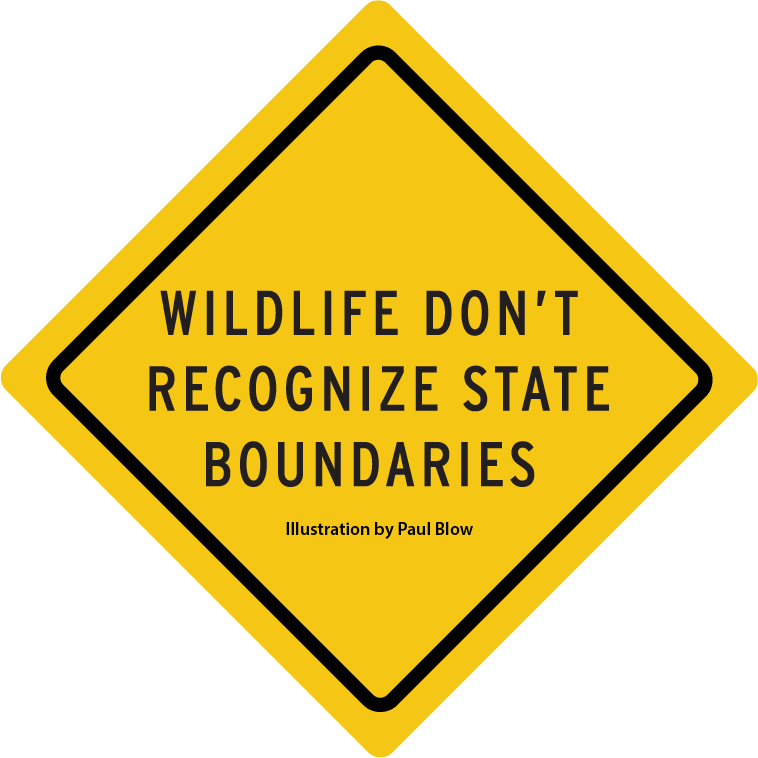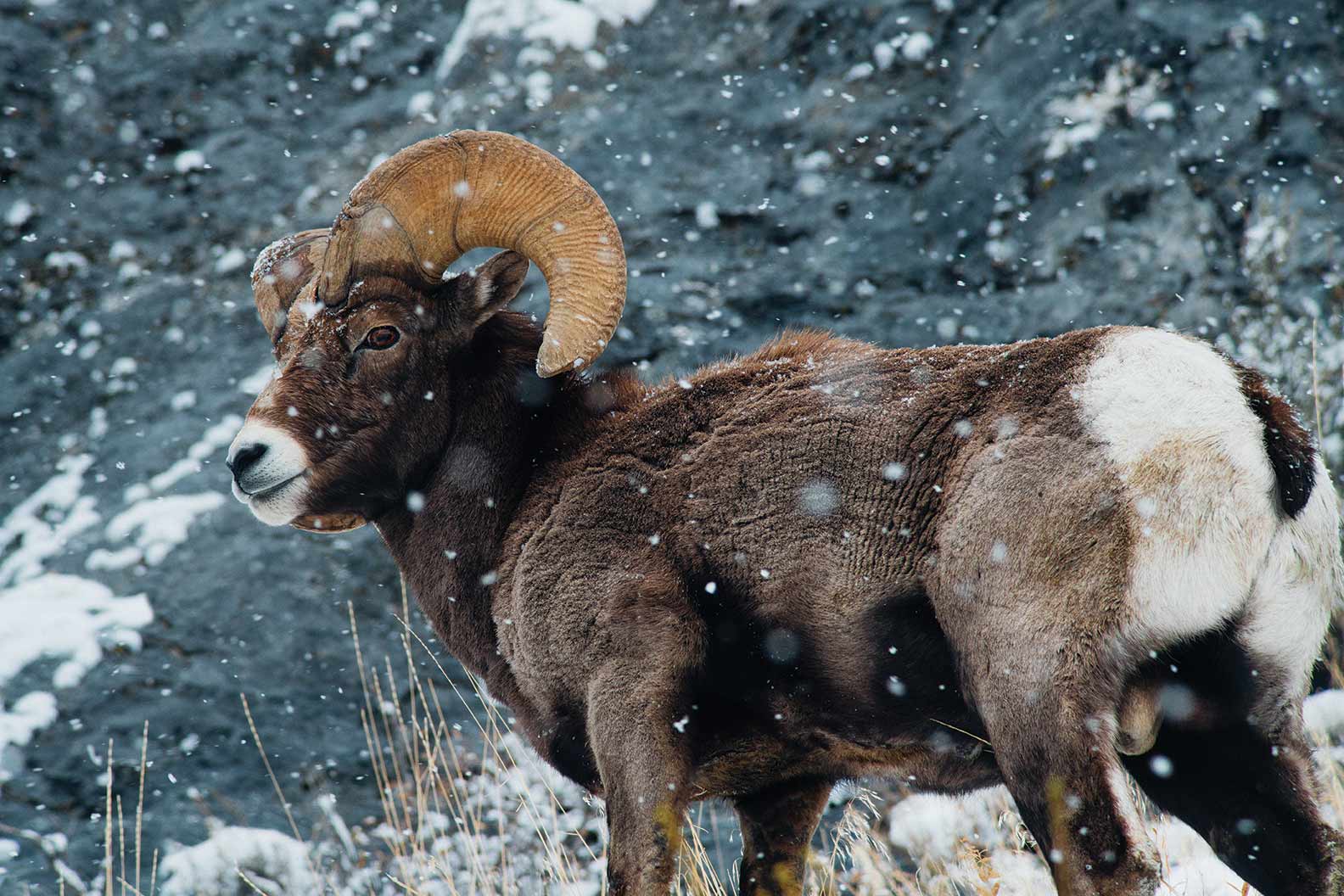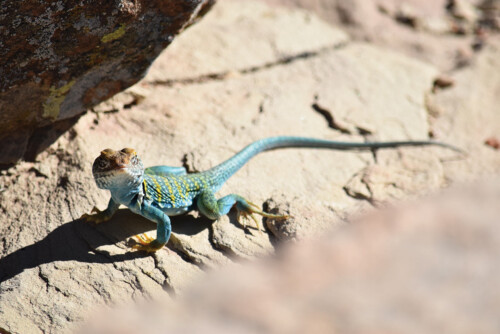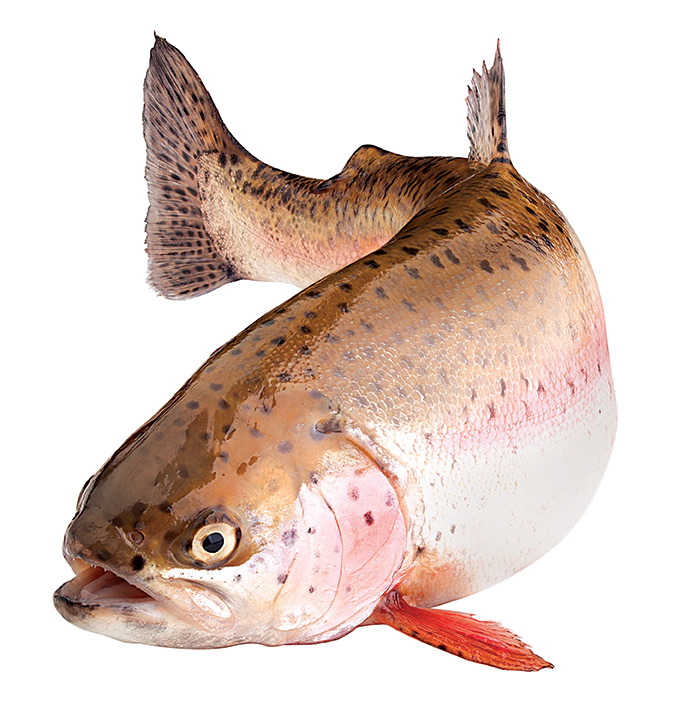Header Photo Caption: Wildlife crossings help improve safety for drivers and animals, including these elk on a highway in Colorado’s Rocky Mountain National Park.
When asked about his most memorable experiences with wildlife migration and crossings, Kevin Madler, who manages wildlife concerns for the Arkansas River Valley area for Colorado Parks and Wildlife, recalls the elk calves he has observed encountering a highway underpass for the first time.
The calves, already struggling to keep up with the rest of the herd, approach the underpass with trepidation. As the herd moves on ahead of them, they start to panic. “But when they finally figure out how to cross and come out the other side,” Madler told WRA in a written interview, “they act like that was no big deal, ‘look at me now.’”
Wildlife crossings like those Madler described are one solution to help keep wildlife—and drivers—safe in the Interior West. They are one of the tools Western Resource Advocates and other conservation groups endorse to help preserve and connect the migration routes that wildlife follow as they move across the West in search of food and shelter.
Colorado Parks and Wildlife District Manager Kevin Madler says a highway crossing on Colorado’s Highway 285 around mile marker 146 has helped reduce the number of car crashes involving mule deer, especially in the fall during the rut, or mating season.
“I would always have a few large bucks struck by automobiles, as the deer are very active and traveling throughout the entire day,” Madler told WRA. “Since the high fence crossing structure has been built, collisions with large mature bucks have not been an issue.”
While the crossings on 285 and elsewhere in the West are an important step, the West’s sweeping wildlife corridors are under threat from the growing and related challenges posed by population growth and climate change. In fact, the West is losing natural areas at an alarming rate—one football field of land was lost every 1.65 minutes between 2001 and 2017, according to a study by Conservation Science Partners.
Habitat loss and fragmentation are making it increasingly difficult for wildlife to maintain the migration patterns that are essential to their survival, especially for big game species that must be able to move safely across large landscapes. Climate change is fundamentally altering landscapes and habitats, shifting migration patterns and forcing some animals to relocate for survival.

Western Resource Advocates is working to combat those threats and permanently protect and connect half of our Western lands so that they support thriving wildlife populations, robust local outdoor economies, and unparalleled opportunities to enjoy the West’s natural beauty.
One way we hope to achieve that goal is by encouraging state and local governments to identify and protect wildlife corridors.
In 2019, New Mexico Gov. Michelle Lujan Grisham signed into law the Wildlife Corridors Act, the first comprehensive law directing multiple state agencies to identify wildlife corridors and establish plans to protect them. Also in 2019, Colorado Gov. Jared Polis issued an executive order to locate high traffic areas where wildlife corridors cross highways and instruct the Colorado Department of Transportation to incorporate wildlife crossing structures into future highway planning processes.
But state, tribal, and national borders don’t mean anything to wildlife. A major wildlife corridor runs between northern New Mexico and southern Colorado. Both states have identified the upper Rio Grande and upper San Juan basin areas as critical, and potentially threatened, migration routes for big game species like mule deer, elk, and pronghorn. So New Mexico is working with Colorado on a regional approach to wildlife protection.
WRA helped shape the Colorado executive order and continues to support ways the two states can work together to protect wildlife across the region. This year, Western Resource Advocates will be engaging closely with New Mexico and Colorado state wildlife management agencies to begin implementing recently created policies to protect wildlife corridors and reduce barriers to wildlife migration. In addition, the Western Lands team is working with lawmakers in Nevada to develop state-level policies to protect wildlife migration corridors and winter ranges and expects action in the near future.
“Western states are stepping up and leading to safeguard our natural resources and wildlife by protecting and connecting habitat,” said Andre Miller, Western Resource Advocates’ lands policy analyst. “We look forward to continued partnerships with our Western land and wildlife managers to carry through on state-level measures.”
